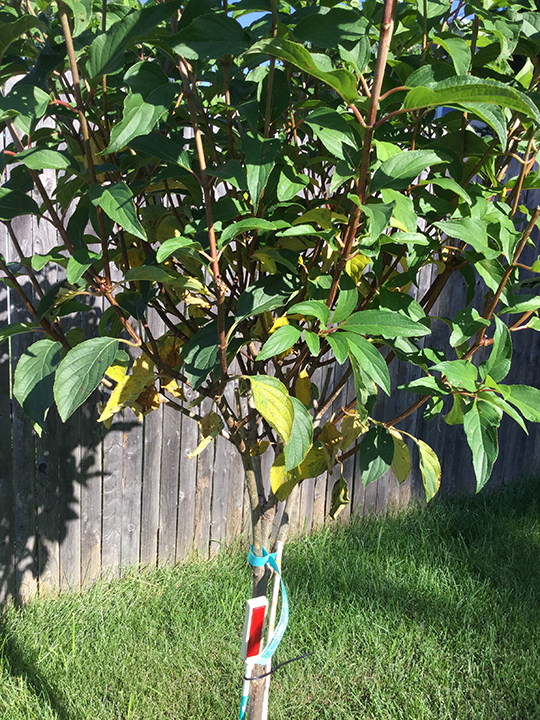Hydrangea Leaves Turning Yellow Can Be Fun For Everyone
Wiki Article
The 30-Second Trick For Hydrangea Leaves Turning Yellow
Table of ContentsThe Single Strategy To Use For Hydrangea Leaves Turning YellowGetting The Hydrangea Leaves Turning Yellow To WorkThe Definitive Guide to Hydrangea Leaves Turning YellowAbout Hydrangea Leaves Turning Yellow
Hydrangea plants are understood for their beautiful blooms, but occasionally their fallen leaves can transform yellow. This is typically a sign that something is incorrect and the plant requires your assistance. There are numerous feasible reasons for yellow leaves on Hydrangeas, and the good news is many of them are simple to repair. Right here we'll cover the most usual reasons for Hydrangea leaves transforming yellow and how to fix them.Hydrangea leaves turning yellow can be a reason for worry. Hydrangea leaves normally transform yellow when the plant is overwatered.
When the roots of a plant are submerged in water for extended periods, they begin to asphyxiate and rot. This process cuts off the origins' oxygen supply, causing the leaves to transform yellow and eventually die. Overwatering can additionally result in other issues such as leaf decrease, root damages, and fungal development.
If you assume your Hydrangea is overwatered, the most effective service is to allow the dirt dry out completely prior to sprinkling once again. It's likewise a great concept to examine the water drainage of your pot or yard bed and ensure that water is not merging around the plant's origins. Hydrangea plants require well-drained dirt to flourish.
Hydrangea Leaves Turning Yellow Things To Know Before You Get This
Hydrangea leaves can also turn yellow if the plant is not getting enough water. This occurs when the plant does not get enough water, and the soil starts to dry out.
more info here This is recognized as "fertilizer shed," It takes place when the plant's roots are revealed to too much fertilizer. Various other indications of plant food shed consist of brown or yellow fallen leaves, wilting, and stunted growth.
This will help get rid of any kind of excess fertilizer from the origins of the plant. It's also a good idea to reduce the amount of fertilizer you are utilizing.
Not known Details About Hydrangea Leaves Turning Yellow

If your Hydrangea is ravaged with bugs, treating the plant with neem or gardening oil is the ideal option. It's also excellent to eliminate any kind of affected leaves from the plant (Hydrangea Leaves Turning Yellow).
To stay clear of spreading out the illness, guarantee to disinfect your scissors before cutting any kind of leaves off. Hydrangea leaves can also turn yellow if the temperature stresses the plant. This typically happens when the plant is revealed to extreme chilly or warm. The leaves of the plant will turn yellow and begin to hand over.
If the temperature worries your Hydrangea, you need to relocate the plant to an area where it will certainly be safeguarded from the extreme cold or heat. You can also attempt to offer the plant with some partial color if subjected to route sunlight. You can also attempt adding compost around her latest blog the plant base to aid control the temperature level.
Little Known Questions About Hydrangea Leaves Turning Yellow.
The fallen leaves can also transform yellow if the Hydrangea plant has root rot. This is generally caused by overwatering or poor drain. When the plant's origins are immersed in water for too long, they begin to rot. Among the most typical root rot symptoms is yellowing leaves, as the fungi prevents the origins from soaking up nutrients from the dirt.Examine the origins of your Hydrangea if it has origin rot. If some healthy and balanced origins are left, you can try to save the plant by replanting it in a new pot with fresh dirt.
If your Hydrangea is greatly affected by root rot, beginning with a brand-new plant is best. As Hydrangeas age, their leaves will gradually turn yellow and brownish prior to dropping off the plant.
You can aid the plant by guaranteeing it is obtaining sufficient water and nutrients. You can also mulch around the plant base to help it maintain moisture. There are several reasons hydrangea leaves might turn yellow and diminish. Hydrangea Leaves Turning Yellow. One opportunity is that the plant is not obtaining enough water.
Report this wiki page